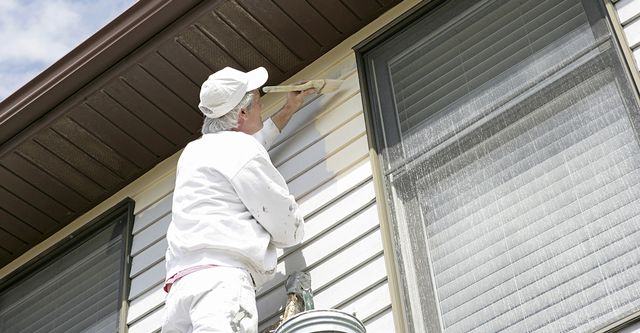If your radiators are cold at the bottom, your boiler is making strange noises, or your heating system seems inefficient, it might be time for a powerflush. This specialized cleaning process is essential for maintaining the health and performance of your central heating system. In this article, we will explore what a powerflush is, how it works, and why your system can benefit from it.
What is a Powerflush?
A powerflush is a deep-cleaning process used to remove sludge, rust, and other debris from your central heating system. Over time, these impurities build up inside your pipes, radiators, and boiler, causing blockages and reducing the efficiency of your system. A qualified heating engineer uses a powerful pump and chemical solution to flush out this debris, leaving the system clean and operating at peak efficiency.
Signs Your Heating System Needs a Powerflush
Your central heating system may not always show obvious signs of distress, but there are some telltale symptoms that suggest a powerflush could be necessary.
Cold Spots on Radiators
One of the most common signs of internal sludge is cold patches on your radiators, particularly at the bottom. This sludge prevents hot water from flowing evenly throughout the radiator, resulting in uneven heating.
Noisy Boiler or Radiators
If you hear banging, gurgling, or kettling noises coming from your boiler or pipes, it could be due to a build-up of debris restricting water flow. These noises are not just annoying—they’re a warning sign.
Slow Heating Response
When your system takes too long to heat up, it’s usually due to a lack of water circulation caused by blockages. A powerflush can help restore efficient flow.
Discolored Water When Bleeding Radiators
If you bleed your radiators and the water that comes out is dark and murky, it indicates a heavy build-up of sludge. Clean water should be nearly clear.
Boiler Frequently Needs Restarting
A boiler that shuts down unexpectedly or needs regular resetting may be reacting to poor circulation or overheating—both of which can be caused by internal debris.
The Powerflush Process Explained
Understanding the steps involved in a powerflush will help you appreciate the value it brings to your heating system.
Initial Inspection
A heating engineer first inspects your system to determine if a powerflush is needed. This may involve checking the color of the radiator water and testing flow rates.
Connection of Powerflushing Equipment
Once the need is confirmed, the engineer connects a specialized powerflush machine to your system. This machine uses a high-velocity pump to circulate water and cleaning chemicals through the system.
Removal of Debris
The powerful flow dislodges and carries away sludge, rust, and other particles. Engineers often use magnetic filters to trap metallic debris and keep it from recirculating.
Chemical Treatment
Specific chemicals are used to dissolve limescale and break down other deposits. Once the cleaning is complete, neutralizers are added to flush out the cleaning agents.
Refill and Test
Finally, the system is refilled with clean water and a corrosion inhibitor. The engineer will then test your radiators and boiler to ensure everything is functioning efficiently.
Benefits of a Powerflush
There are numerous advantages to having a powerflush carried out on your heating system. It not only resolves current issues but also prevents future problems.
Improved Heating Efficiency
By clearing out sludge and debris, water can circulate freely and heat can be distributed more evenly. This leads to faster heating and more comfortable living conditions.
Lower Energy Bills
An efficient system requires less energy to heat your home. After a powerflush, your boiler doesn’t have to work as hard, which can result in significant cost savings.
Prolonged Lifespan of Boiler and Radiators
Sludge build-up causes undue stress on your boiler and radiators. Removing this sludge can help extend the life of these costly components.
Reduced Risk of Breakdowns
A clean heating system is far less likely to suffer from blockages, pump failures, or other mechanical issues. That means fewer callouts and emergency repairs.
Enhanced Water Quality
After a powerflush, the water running through your system will be clearer and less corrosive, improving performance and protecting internal components.
Better Radiator Performance
With no obstructions inside, your radiators will heat up more evenly and quickly, giving you better control over your home’s temperature.
When Should You Get a Powerflush?
A powerflush is not something you need to do every year, but there are times when it becomes essential.
After Installing a New Boiler
If you’re fitting a new boiler to an old system, a powerflush is often recommended—or even required by the manufacturer—to prevent debris from damaging the new unit.
Every 5–10 Years
Depending on usage and water quality, most systems benefit from a powerflush every five to ten years. Consult your engineer to determine the right interval for your setup.
Before Major Heating Upgrades
If you’re adding new radiators, underfloor heating, or converting your system, it makes sense to perform a powerflush beforehand to ensure optimal performance.
Is a Powerflush Worth It?
While a powerflush may seem like a significant investment upfront, the long-term benefits make it a smart choice for homeowners looking to protect their heating systems and save on energy costs. Most homeowners report noticeable improvements in performance and efficiency within days of the service.
Conclusion
A powerflush is one of the most effective ways to restore and maintain your central heating system. From improving efficiency and reducing energy bills to prolonging the lifespan of your equipment, the advantages are both immediate and long-lasting. If you’ve noticed any signs of inefficiency or if your system hasn’t been cleaned in years, it’s worth consulting a professional to see if your home could benefit from this vital maintenance service.



